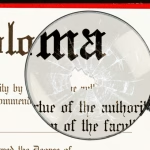It had never been this quiet in our neighborhood. There had always been children riding bicycles or someone with a bass line making the street vibrate while playing music from their car, front porch, or shoulder. Boys would go looking for a court, a hoop, and a game, and there would always be the sound of a basketball hitting concrete. Birds had always sung as squirrels darted through trees. Birds, balls, squirrels, and bicycles were all gone now. Just a spooky silence.
The old oak tree in front of our house had been struck by a silver car with clouded windows, bending its hood into a crooked crescent. The yard and the street were littered with branches from that ancient oak, some of which were as thick as bodies. A spray-painted orange X, a symbol used by search and rescue teams across New Orleans in the days and weeks following the storm, was displayed on the boarded-up window next to our door. There was a distinct number for each quadrant of the X. The time and date of the search were displayed in the top quadrant, the team that conducted the search was identified on the left, any hazards discovered within were indicated on the right, and the number of people—dead or alive—found inside was displayed on the bottom. The orange spray paint on the houses we passed that said something different still haunts me even though our bottom quadrant read “0.”
In order to open our door, the search and rescue crew had broken the glass next to it. It was still open. Despite our masks, the smell hit us as soon as we stepped inside the house. I had never in my life come across anything so strong; it knocked me back past the door frame.
I noticed that the walls were covered in mold when I went back inside. Spores of blue-green were everywhere. Some of the floorboards had come loose, and others were warped. Rotten food was spilling out of the refrigerator door, which was hanging open. The living room’s television was on the floor, face down. On the floor beneath the stairwell lay my mother’s wedding gown, which had been created and stitched by a local seamstress who had created gowns for generations of Black women in New Orleans. Our dining-room table was gone, but a kitchen stool dangled from one of its legs from the chandelier. It had been carried into our living room by the rising water.
The mahogany table was upright but misshapen. A glass-domed cake stand with a piece of a birthday cake still inside was perched atop it, a time capsule that had not been impacted by the devastation surrounding it. What I remember most clearly, twenty years later, is the cake.
The first mandatory evacuation order in New Orleans’ history was issued by Mayor Ray Nagin on August 28 just before 9:30 a.m. for all citizens of the city. My family and I had already left by that point. My father remembers being uneasy when he woke up at two in the morning on August 27. When he turned on the television, he saw that forecasters were predicting that Katrina would intensify into a Category 5 hurricane, which is the strongest storm category. Thus, we secured the windows, loaded the car with gas, and packed the bags. My dad instructed me to remove our photo albums from the shelf and place them in heavy-duty trash bags. We had never done this before. My parents had gathered paintings by Black local artists over the years, and we did the same with the artwork on our walls. My parents’ bedroom on the second floor is where we left the bags.
Cake has never really appealed to me. I detest chocolate and don’t have a sweet tooth. However, I made an exception for Adrian’s, the nearby bakery, which sells vanilla-almond cakes with pineapple filling. I adored the cake’s soft, subtle crumb, the frosting’s sweetness, and the filling’s candied viscosity. I still feel like a kid when I taste it, which my parents used to get me for my birthday every year.
I celebrated turning 17 on August 25, 2005, by enjoying a large slice (or two) of this cake with my family before going to the movies with my friends. We were unaware that the leftover cake would remain inside the dome for weeks when my mother put it there.
For us, evacuation was nothing new. Residents would receive storm warnings from the meteorologists, which was almost a daily occurrence. Until the storm passed, we would board up our windows, fill up our car with gas, load up a few days’ worth of clothing into duffel bags, and drive to Jackson, Baton Rouge, or Houston. After that, we would return home, gather some branches, take the boards off our windows, and carry on with our normal lives. My family evacuated to Houston in 2004 before Hurricane Ivan hit, spending 20 hours stuck in traffic on a normally five- to six-hour journey. Until the storm passed, we had stayed with my aunt and uncle.
Many people in New Orleans believed that evacuating wasn’t worth it because hurricanes were so common. Some would choose to stay home and weather the storm, while others, even if they wanted to, lacked the resources or ability to do so. Despite our repeated assurances that this storm would be different, it wasn’t. However, it was this time.
At last, we climbed into our vehicle. We got to my aunt and uncle’s house outside of Houston that evening. I watched CNN coverage nonstop for the next few days. I witnessed people on rooftops pleading for assistance. I witnessed parents pushing their kids in ice chests as they waded through shoulder-deep sewer water to get to higher ground. I watched videos of floating corpses. Homes that were totally submerged were visible only a few blocks away from mine. That’s when I realized what had happened to mine.
The soccer coach at Davidson College in North Carolina called me after I had been sitting on the couch for a few days in a catatonic state. As a diversion, Davidson’s coach asked if I would like to make my official recruiting visit to the school at this time, as I was being courted by several Division I schools. My father and I got on a plane after I said I would.
I witnessed the Davidson soccer team’s exciting overtime triumph over the University of North Carolina at Charlotte, a nearby rival. I went to my first college party, took a political science course on the history of the presidency, and discovered the unique delight of receiving quesadillas and late-night wings from the student union. I informed my dad at the conclusion of my visit that I was certain of my destination. That same day, I made a commitment to Davidson. Looking back, I see that I needed an anchor, which is why I chose Davidson so fast. At least I knew where I would be attending college the following year, even though I had no idea where I would be attending high school the following week.
After my parents moved back to New Orleans in January for work, taking my younger brother with them, my sister and I ended up spending the entire school year in Texas, living with my aunt and uncle. One of the few places that had not flooded was where they lived with my grandfather. I went to Davidson that fall, and my family moved into a new home, for which I was thankful, but it never felt quite like mine.
As children, it seemed as though the mirror-lined wall in our former family room was calling out for us to dance every time my sister, brother, and I entered the space. As many home videos attest, we danced to the music of my dad’s records and CDs while gleefully bobbing in our striped Hanna Andersson pajamas. While my father laughed behind the camcorder, we would start jumping like the floor was covered in lava and spin like a band of little, clumsy tornadoes as Earth, Wind & Fire’s “Let’s Groove” trumpets blared from the speakers.
Since he was a high school student in the 1970s, my father had been collecting records. He kept hundreds of them in the floor-level cabinets in the family room, including works by John Coltrane, Miles Davis, Stevie Wonder, Chaka Khan, Funkadelic, Grover Washington Jr., and others. However, we hadn’t had time to move them due to the hurry and confusion of our trip out of New Orleans, and the collection was destroyed when we got back in October.
Of course, we can still stream the songs we danced to whenever we want. However, the albums themselves were irreplaceable artifacts, a tangible representation of all those joyful memories.
Like every summer, I returned home to New Orleans at the end of June this year. I bring my kids because I want them to have a sense of belonging to the city that helped to shape who I am. The fact that my parents have now lived there longer than we did in the house where I grew up has recently struck me every time I visit them. I’ve been calling this place “the new house” for the past 20 years, so the realization defies both my sense of time and language.
I drove down my old street one rainy afternoon and pulled up in front of the house I grew up in, while my children were out with their grandparents. After the house was gutted, a new family eventually moved in. New walls, fences, and windows were installed. White paint had been applied to the red brick facade. The old oak tree was still standing on the front lawn, its trunk thicker and darker with age, its branches reaching farther over the street. The squirrels and birds were back. People took their dogs for walks. A softball was tossed back and forth between two girls.
The house across the street from ours looked much the same as it had when I was a kid, despite the fact that most of the houses in our neighborhood had been demolished and rebuilt. The only noticeable changes were the two canoes and the kayak that were ostentatiously tied to the roof, as though the residents were getting ready for the next calamity.
After the storm, Adrian’s had also moved, so I drove there. The aroma of freshly made cinnamon rolls and glazed doughnuts greeted me there. Gleaming from glass display cases were white cakes. Individual pieces of plastic-wrapped cake were resting on top of the glass. As I got closer, I noticed that the sponge layers were leaking golden pineapple filling. I purchased three items.
When I got back to my parents’ house, I pulled out our family photos from a cabinet. I’ve always been grateful that the artwork and photo albums made it through the storm. I made an effort to envision what it might be like to lose access to these pictures—the christenings, graduations, and birthdays. Lazy Sunday afternoons, camping excursions, and beach days. I remember my mother and I on Easter morning when I was three years old, her wearing a gorgeous blue dress and me wearing a red bow tie and a brown brimmed hat; my sixth birthday party, with my face painted like a tiger, staring down at the thick slice of vanilla-almond cake on the table in front of me; and my father and I flying a kite on a windy day at the lake, his hat turned backwards and his sunglasses glistening.
A ziplock bag containing additional pictures—pictures we took of our house when we went back to assess the damage following the storm—was placed next to the albums. I was reminded of that day as I laid them out on the dining room table—the rotten stench, the buckling floorboards, the fungus-covered walls.
In an effort to get the sponge, frosting, and filling all in one bite, I took off the Saran Wrap that was covering one slice of cake and sank my fork into it. It was just as delicious as I remembered, and I ate so much that I splattered some frosting on the pictures that were in front of me. An old clock that hung above the doorframe in our kitchen, its hands frozen in place, caught my attention in the Katrina pile when I was moving an album to clean it off. It appeared to be leaking spores.
People in or from New Orleans frequently define time in terms of Hurricane Katrina. “Was it before or after the storm?” is a question that people ask when trying to remember a particular incident, moment, or experience. That boundary, for many of us, also represents our actual physical relationship to the city—it’s a question that frequently means Did that happen before or after I had to leave my house? I never lived in New Orleans again because I was a senior in high school when Katrina struck and I completed my education in another state. I would sleep on a pull-out couch in the guest room when I returned home for the holidays.
I sometimes wonder what might have happened that year if Katrina had never occurred. What it would have been like to lead my soccer team as captain during my senior year of high school. What it would have been like to go to prom and homecoming with friends I’d known since I was a young child. And how it would feel to bring my kids back to the home where I was raised.
However, I still remember my childhood in a city that was different from all others in the world—a city that some people believed shouldn’t have been rebuilt. New Orleans remains twenty years later. Taking my kids to Saints games at the Superdome, just like my dad did for me, allows me to create new memories with my own kids. Just like my mother used to do with me, I played with them on the trees in City Park. Even if my parents’ taste buds don’t agree with my nostalgia, I still enjoy eating the cake I adored from Adrian’s at their dining room table. My daughter expressed her desire for the cake to be chocolate. My son’s favorite food is ice cream.











